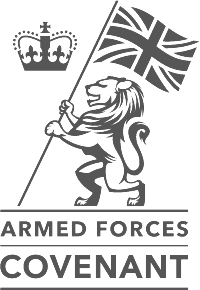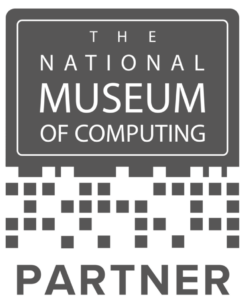This is a guest post, contributed by Michelle Major-Goldsmith, Manager, Service Management Capability at Kinetic IT; and Simon Dorst, Manager, Service Management Service, Kinetic IT
In the last few years, service integration and management (SIAM) has become ‘the new black’, high on the hype-curve. Despite the publication of white papers, blogs, and twitter hashtag feeds, providing various flavours of commentary and opinion, until recently there’s been no formalisation of the term SIAM, nor a standardised methodology. As such, practitioners were left lacking when looking for answers to the questions of what is SIAM? and ‘can it help manage complex IT environments?.
In order to try to bring commonality of purpose, we joined a collective of IT consultants, trainers, and practitioners (now known as the ‘the SIAM Founder Member Architect Group) who embarked upon creating a foundational Body of Knowledge (BoK).
As we’re on the verge of revealing the next step, the SIAM Professional BoK, this is an opportune time to provide you with an insight of the good, the bad … and other traits of SIAM.
A brief history of time – or at least of SIAM
The term service integration and management or SIAM, and the concept of SIAM as a management methodology originated in around 2005 from within the UK public sector. In 2010, the UK Government published a new information and communications technology (ICT) strategy, which included moving away from large prime supplier contracts to a more flexible approach using multiple service providers and cloud-based solutions.
SIAM interest became global when in 2015 AXELOS published several white papers on SIAM, and in 2016 the SIAM Foundation Architect Group was formed by Scopism. The objective was to bring the giants of the SIAM world together and create a consolidated view of their knowledge and experience. This culminated at last year’s itSMF UK conference with the release of the Foundation Body of Knowledge, providing common terminology, a standardised description, and practical guidance (as well as winning the Thought Leaders of the Year award from itSMF UK).
When writing the SIAM Foundation Body of Knowledge, we came across some great material, too much and perhaps too practical to put into the Foundation BoK. So, this year we continued by writing a Professional-level Body of Knowledge. We expanded our team to more than 40 global practitioners to make sure the new BoK would reflect current practices, but also pitfalls and successes.
In this BoK we take the theory of the Foundation BoK and put it into the reality of the roadmap that we’re all on, and which is also the basis for our presentation at the upcoming itSMF UK event (ITSM17). The SIAM Professional BoK will provide more in-depth guidance, accompanied by examples of how to, or how not to, apply this into practice.
But we also want to make sure that SIAM is considered as part of modern-day ITSM, as is the undeniable reality of having to deal with multiple suppliers. We’re hoping that SIAM can step outside of the IT arena, and play its part in Enterprise Service Management (ESM), managing business services across multiple domains and providers (although this may need an additional integration layer).
So, what is SIAM?
Simply put, it’s in the name: service integration and management, and in particular service integration across multiple providers. The management of multiple service providers by a single organisation provides significant challenges in overall administration. SIAM seeks to address the need to provide a standardised methodology for integrating and managing multiple service providers and their services. It enhances the delivery of the end to end supply chain, it provides governance, management, integration, assurance, and coordination to maximise the value received from multiple service providers.
SIAM is not just a methodology for the management of services by a single organisation or governing body. It supports cross-functional, cross-process and cross-provider integration, in a complex sourcing environment or ecosystem in which all parties understand their role and responsibilities, are empowered to deliver, and are held accountable for their outcomes. As such it’s more than a rigid contractual performance structure, but an organisational change that includes collaboration, and end-to-end focus into the core of every stakeholder involved.
More tangible than this collaborative, end-to-end culture (as important as it is!) is the structural and functional organisation that SIAM provides to a multi-provider environment. The SIAM model provides a single logical entity with accountability for the end to end service delivery, known as the service integrator. The customer organisation has a single management relationship with the service integrator, and the service integrator manages the relationships with the multiple service providers supporting the organisation.
The definition of this structure also allows for a clearer definition of a process model (tooling strategy, and governance, reporting, and performance framework) and then the allocation of mandated or directive practices. So, whilst in some case the service providers may have to use the same practice (for instance ITIL), in most cases they can use their own preferred one (for instance Agile), as long as the interactions between the providers and with the service integrator meets the predefined outcomes (i.e. the WHAT and not the HOW).
That’s the good, now the bad…
Like many practices there are some wild stories out there regarding SIAM. In fact, that was part of the reason why we got into writing blogs, white papers, and then the Foundation Body of Knowledge, and now the Professional BoK. We want to present SIAM as a coherent framework, to make sure that people understand what it is and how it can help them.
So, SIAM is NOT…
- The former name of Thailand … well it is, but not for our purposes 😉
- A silver bullet – it will not solve all your issues (you know … the ones you’ve been trying for decades to have ITIL resolve, and then you thought DevOps would take care of them, and now you’re looking for the next best thing…)
- A replacement of ITIL either. Whilst there are similarities and overlaps to the basic principles of both (but then again, that would be the case for most service management practices), SIAM is not meant to take over where ITIL left off. But neither do you need to choose between ITIL or SIAM (or any other practice for that matter). SIAM is unique in offering a structure, culture, principles, and practices for managing a multi-service provider environment, which then allow the use of your framework-of-choice!
- A fad, something those consultants came up to sell some books, training and consultancy … wait a few years and they’ll be singing a new song! SIAM has actually been around for more than 10 years and there is already a treasure trove of tried-and-tested SIAM practices out there. The need to build an agile ecosystem of multiple service providers and utilise best-of-breed, collaboration, and coordination is not going anywhere!
The SIAM Roadmap
The basis of our presentation at ITSM17 is centred around the SIAM Roadmap, which has four iterative stages:
- Discovery & Strategy
- Plan & Build
- Implement
- Run & Improve
A keen observer will notice how these stages are aligned to the ITIL Service Lifecycle and many other lifecycle models, which is of course not by coincidence as those models are tried and tested, plus it allows for an easier alignment with those practices.
Find out more at ITSM17
If you’re attending the event then hopefully you’re able to join us for our session ‘SIAM – The Good, the Bad, the Obligatory, and the Virtuous’ (20th November at 11.30am) where we’ll expand on this, and the roadmap, by providing some best and not so good practices. We’ll be presenting together with Claire Agutter from Scopism.


